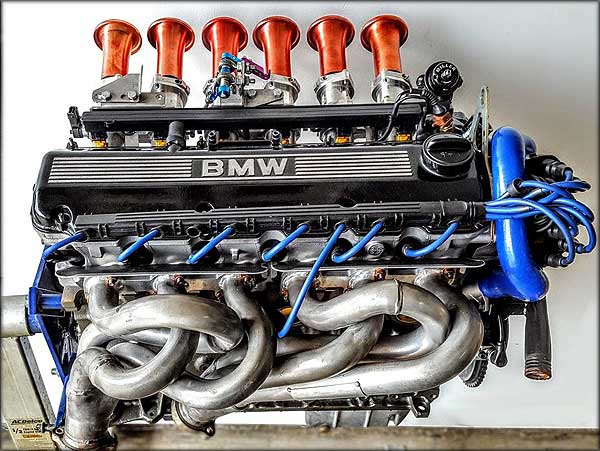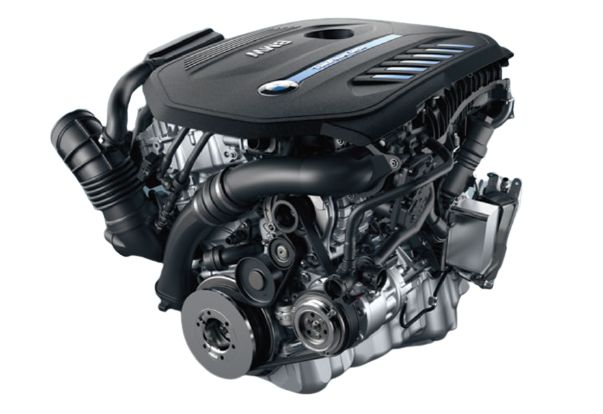The Evolution of the BMW Engine: A Recall at Iconic Models
The Evolution of the BMW Engine: A Recall at Iconic Models
Blog Article
Discovering the Evolution of Combustion Engines in Modern Transport Solutions
As we browse the landscape of modern transport, the evolution of combustion engines stands as a testament to human ingenuity and engineering expertise. The interaction of history, modern technology, and ecological problems in shaping the trajectory of burning engines develops a story that is both insightful and compelling.
Early Beginnings of Combustion Engines
Just how did the concept of combustion engines first emerge in the very early stages of transport development? The origins of burning engines can be mapped back to the 17th century when the concepts of inner burning were very first discovered.
The innovation moment came with the innovation of the initial successful gasoline-powered engine by Karl Benz in 1885 - bmw engine. This engine led the way for the advancement of the contemporary car, revolutionizing transport systems worldwide. Subsequent developments by Nikolaus Otto and Gottlieb Daimler even more improved burning engine technology, resulting in the automation of automobiles and the fast development of the transportation industry
These early burning engines were identified by their simpleness and efficiency, laying the structure for the facility and effective engines used in contemporary transport systems. The advancement of combustion engines has actually contributed fit the means we take a trip and transport goods, marking a considerable landmark in the history of transportation advancement.
Transition to Internal Combustion Modern Technology
The change to interior burning technology noted a critical shift in the development of transportation systems. This shift started in the late 19th century, with developers like Nikolaus Otto and Gottlieb Daimler establishing the first successful interior burning engines. These engines changed transport by supplying a more powerful and reliable option to vapor engines and electric motors.
One of the essential advantages of interior combustion engines was their ability to be scaled down to match lorries, bring about the development of vehicles and motorbikes. This shift from large, fixed engines to small, mobile ones led the means for the modern-day transportation systems we see today.
The change to internal combustion innovation likewise stimulated improvements in fuel innovation, leading to the advancement of gas and diesel as key fuel resources for automobiles. This change not only made transport extra obtainable to the masses yet additionally laid the structure for the oil and gas industry to come to be essential to global economic situations.
Effect of Combustion Engines on Transportation
The fostering of burning engines in transport systems militarized a profound shift in the effectiveness and speed of global wheelchair. Burning engines changed transport by supplying a reputable and flexible resource of power for different cars, including autos, trucks, ships, and airplanes. This development considerably improved the ability for people and goods to relocate over fars away in shorter time structures, resulting in enhanced connection between areas and nations.
Additionally, the extensive use burning engines has had a considerable effect on financial advancement. The ability to transfer goods effectively has spurred trade and business, allowing organizations to broaden their markets and reach customers worldwide. This has helped with financial development and globalization, as products can now be transferred faster and in larger quantities than ever.
However, the environmental effect of combustion engines can not be overlooked. The combustion of fossil fuels has brought about air contamination and greenhouse gas emissions, adding to environment adjustment and positioning wellness threats to populations. bmw engine. Consequently, there is a growing focus on creating alternative propulsion modern technologies to mitigate these adverse results and create a more sustainable future for transport
Innovations in Combustion Engine Style
Countless developments in burning engine style have pushed the development of transportation systems over the decades. One noteworthy advancement is the development of turbocharged engines, which utilize exhaust gases to drive a right here generator that compresses incoming air, permitting for more gas to be burned, resulting in increased power outcome without a considerable rise in engine size. In addition, straight injection innovation has boosted gas performance and performance by precisely controlling the quantity and timing of fuel injected into the combustion chamber. Variable shutoff timing systems have actually likewise reinvented engine design by maximizing air movement at various engine rates, improving both power and effectiveness. An additional significant improvement is the integration of light-weight products such as carbon fiber and light weight aluminum alloys, decreasing overall engine weight and enhancing automobile gas economic climate. Developments in computer-aided style have actually enabled designers to optimize engine efficiency and performance through simulations prior to physical prototypes are constructed, conserving time and resources in the development procedure. These innovations collectively add to the continuous enhancement of burning engines in modern-day transport systems.
Future Patterns in Burning Engine Advancement
With innovation advancements driving continual innovation, the future of combustion engine development is positioned to reinvent transportation systems around the world. One of the key patterns in combustion engine advancement is the push in the direction of better performance and decreased exhausts. Suppliers are spending heavily in r & d to improve engine efficiency while satisfying rigid environmental laws. This includes the combination of advanced gas shot systems, try this site boosted turbocharging techniques, and making use of lightweight products to optimize fuel consumption and decrease carbon discharges.
One more noticeable fad is the fostering of hybrid innovations in burning engines. Crossbreed engines combine typical combustion modern technology with electric power, providing improved fuel effectiveness and lower exhausts. As the automotive industry shifts towards electrification, crossbreed burning engines are seen as a transitional option that links the void in between conventional automobiles and completely electrical ones.
Moreover, the combination of clever modern technologies, such as synthetic knowledge and information analytics, is expected to play a substantial role in the future of burning engine development. These innovations can maximize engine performance in real-time, bring about much more reliable combustion procedures and enhanced overall lorry performance. Welcoming these future patterns will certainly not only drive development in combustion engine development however additionally contribute to a more environmentally pleasant and lasting transportation environment.

Conclusion
In verdict, the development of combustion engines in modern transport systems has been noted by considerable innovations in technology and layout. From the very early starts of burning engines to the transition to inner burning modern technology, these engines have had an extensive influence on transportation.
The origins of burning engines can be traced back to the 17th century when the concepts of interior combustion were very first explored. These engines transformed transport by providing a much more effective and effective option to heavy steam engines and electrical motors.

Report this page